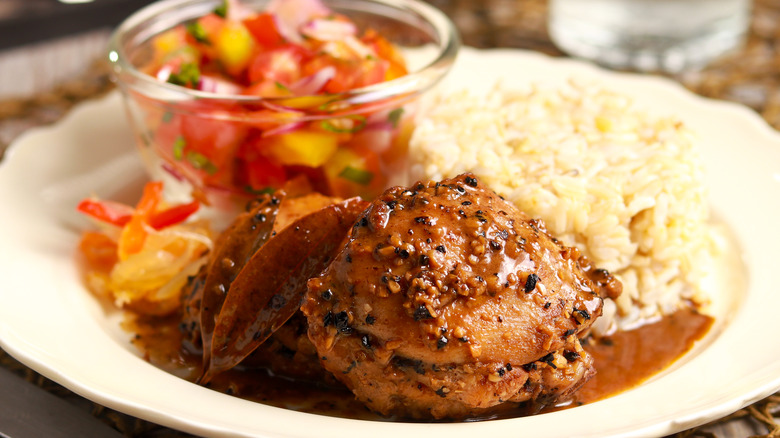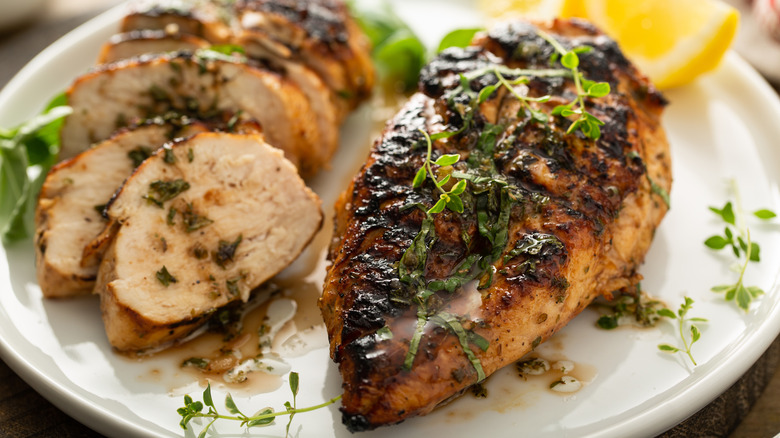The Reason Chicken Adobo Lasts So Long In The Fridge
Some entrées taste better a day or two after they've been cooked, and the Filipino dish chicken adobo is one of them. Reflecting the Spanish root word "adobar," which means "to marinate," Filipino adobo has the meat braised in a mixture of vinegar and soy sauce, with lots of garlic, bay leaves, and black peppercorns thrown in. Some folks also add banana ketchup or lemon-flavored soda like Sprite to add a tangy sweetness to the marinade.
The chicken — or, at other times, pork or a mixture of both — is left to marinate for hours or even overnight before the meat is sautéed in oil and then allowed to stew in the same mixture. It's no wonder, then, that this dish remains packed with flavor long after it has left the stove. In fact, you can store Filipino chicken adobo in the fridge and reheat it to enjoy it once again for the next 5 days. Freeze it, and it stays good for up to 2 months.
The main reason behind the longevity of this dish when it's stored properly is vinegar. This kitchen staple is not just a popular seasoning but also widely used as a preservative due to its acidic nature. Vinegar can keep cheese fresh for longer, and when added to a dish, it brings the acidity of the food to a safe pH level below 4.6; any higher than that, and there's a risk of the botulism-causing organism C. botulinum developing.
Chicken and vinegar make for a delicious combination
Despite its Spanish-based name, adobo was already a staple in Filipino cuisine during pre-colonial times, and locals had long relied on vinegar and salt to preserve food. Using soy sauce to cook adobo began only after they discovered the dark-colored condiment through trading with the Chinese. Today, the so-called original way of cooking the dish is still done: Adobong puti, or white adobo, braises chicken only in vinegar, with garlic and peppercorn as additional seasonings.
Other culinary cultures also use vinegar to cook chicken in different ways. There is the French dish poulet au vinaigre, which uses red wine vinegar to add tanginess that is then balanced with heavy cream. America's equally succinctly named vinegar chicken has the meat baking in the oven while soaked in white wine vinegar. Hawaii has the huli huli chicken, which is marinated in vinegar, soy sauce, garlic, ginger, and brown sugar or honey before it hits the grill.
Aside from its food-preserving qualities, vinegar simply makes chicken taste better. Although potent-tasting when raw, vinegar's flavor mellows as it cooks, its acidity balancing that of other ingredients so the chicken doesn't get overpowered. Vinegar also helps the meat retain much-needed moisture since chicken isn't as fatty as pork or beef. Cook and food writer Nik Sharma explains in his book "The Flavor Equation" that cooking chicken with salt and acid alters the meat's protein structure, making it tender and juicy.

